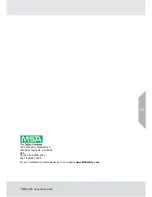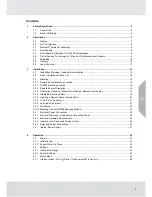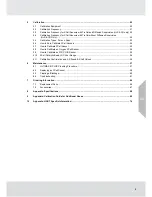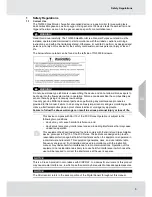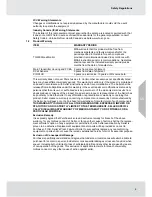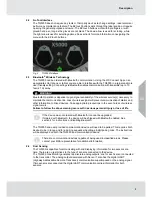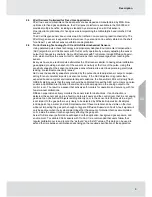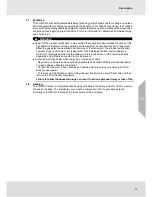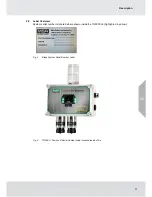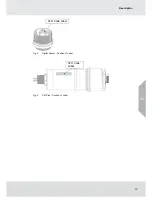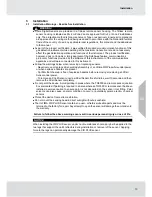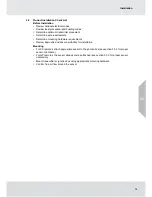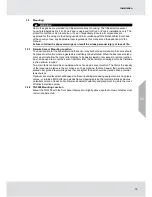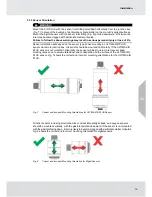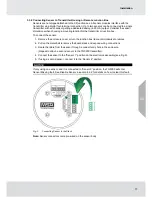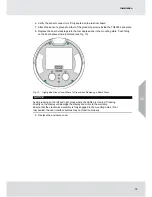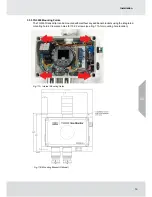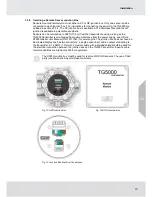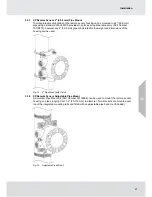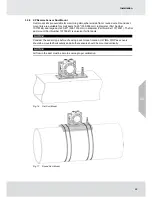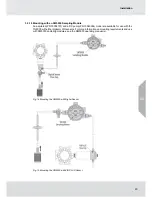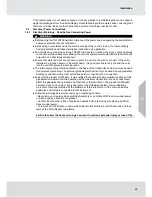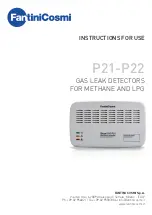
9
Description
2.5
XCell Sensors Optimized for Fixed Gas Applications
XCell toxic and combustible cat bead sensors are developed and manufactured by MSA. Now
optimized for fixed gas applications, the XCell sensor platform is available in the TG5000 and
provides multiple benefits, including a standard 3-year warranty on all XCell sensors.
One important optimization for fixed gas was incorporating the GM catalytic bead into the XCell
sensor.
The XCell Oxygen sensor does not use lead, but rather a non-consuming reaction chemistry. The
XCell Oxygen sensor is expected to last well over 3-years and can be safely stored on the shelf
for at least 1 year without sensor performance degradation.
2.6
TruCal Sensing Technology for CO and H
2
S Electrochemical Sensors
Using patented pulse check technology and proprietary Adaptive Environmental Compensation
(AEC) algorithms, all XCell sensors with TruCal verify operation by actively adjusting the sensor
output for changes in sensitivity. Some XCell sensors with TruCal also include Diffusion Supervi-
sion, which monitors the sensor inlet for obstructions that could prevent gas from reaching the
sensor.
Every six hours, an electrical pulse stimulates the XCell sensor similar to having actual calibration
gas applied, providing a snapshot of the sensor’s sensitivity at the time of the pulse. Using this
sensitivity snapshot, the sensor can diagnose sensor failures like electrode poisoning, electrolyte
leaking, or electrical connectivity issues.
AEC uses the sensitivity snapshots provided by the pulse check to adjust sensor output, compen-
sating for environmental impacts on sensor accuracy. If the AEC adjustment is greater than
expected based on typical environmental impact variations, the transmitter LED’s will slowly flash
GREEN, alerting users that the sensor should be calibrated to reset the AEC cycle. Users can also
enable a Calibration Alert function that will send a milli-amp signal on the analog output to the
control room. The result is a sensor that actively self-monitors for operation and accuracy, with far
fewer manual calibrations.
Diffusion supervision actively monitors the sensor inlet for obstructions. If an obstruction is
detected, the sensor will go into a fault mode to alert users and the control room that it is not seeing
gas due to an obstruction. Objects residing directly on or in the sensor inlet that result in a signif-
icant impact to the gas path are very likely to be detected by Diffusion Supervision. Examples
include paint, tape, water, and dirt. Small amounts of these materials can be visible on the inlet
while not impacting the gas path enough to trigger a Diffusion Supervision Fault. A fault signal will
only be sent out when the system determines that the amount of material that has accumulated
on or inside the sensor inlet is negatively affecting the gas path.
Actual TruCal sensor performance will depend on the application, background gas exposure, and
environment. To validate XCell sensors with TruCal, it is recommended that users follow their
regular calibration cycle and record the “as found” and “as left” values. This data can be used to
extend the time between calibrations depending on the required specification of the application.
US
Summary of Contents for TG5000
Page 1: ...Operating Manual TG5000 Gas Monitor Order No 10212126 L Y REV 0 US ...
Page 36: ...36 Operation US ...
Page 46: ...46 Operation US ...
Page 62: ...62 Maintenance US ...
Page 63: ...63 Maintenance US ...
Page 64: ...64 Maintenance US ...
Page 70: ...70 Appendix Calibration Guide and Additional Gases US ...
Page 71: ...71 Appendix Calibration Guide and Additional Gases R 32 US ...
Page 72: ...72 Appendix Calibration Guide and Additional Gases US ...
Page 75: ...For local MSA contacts please visit us at MSAsafety com ...


